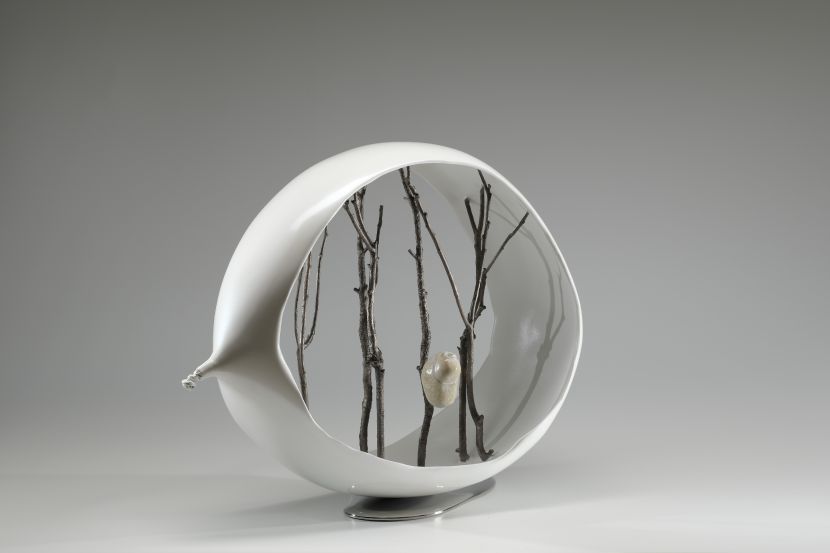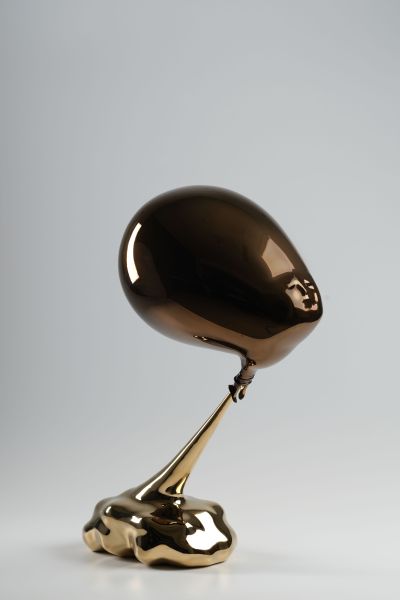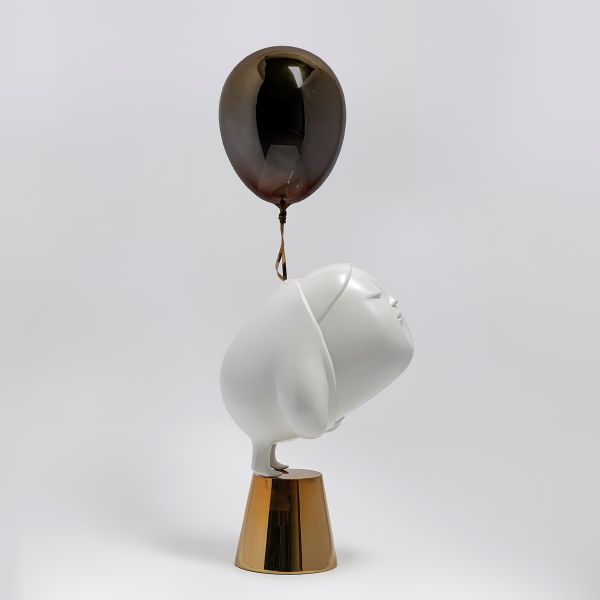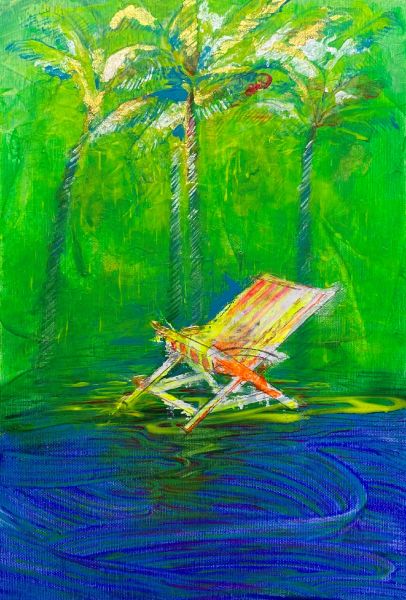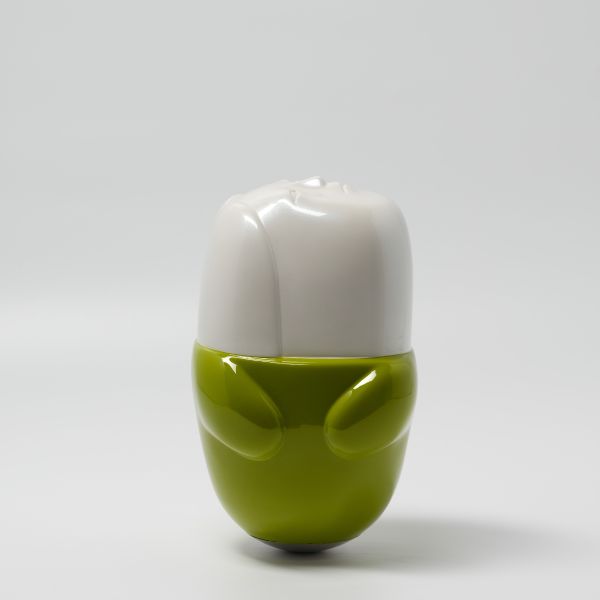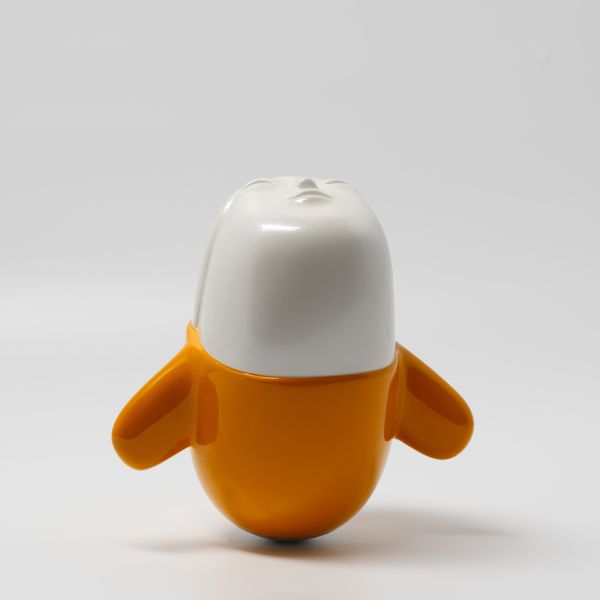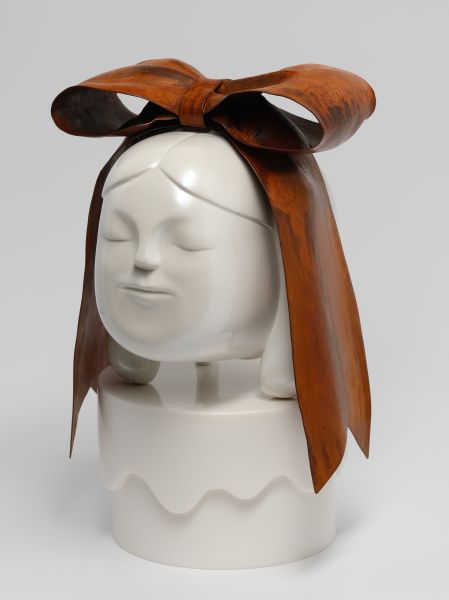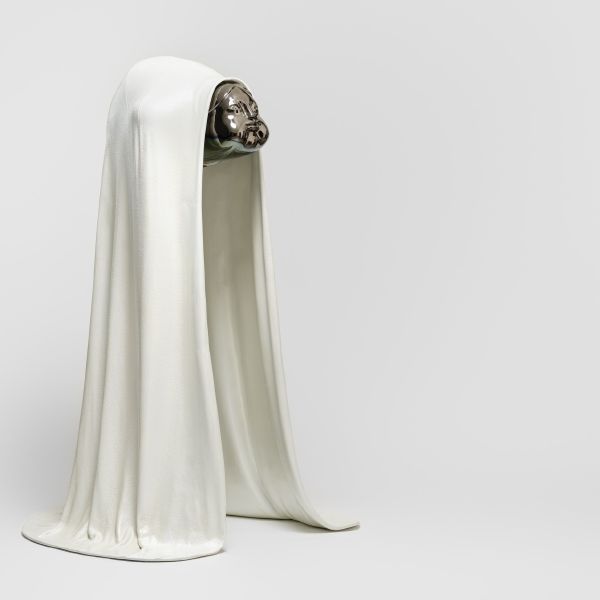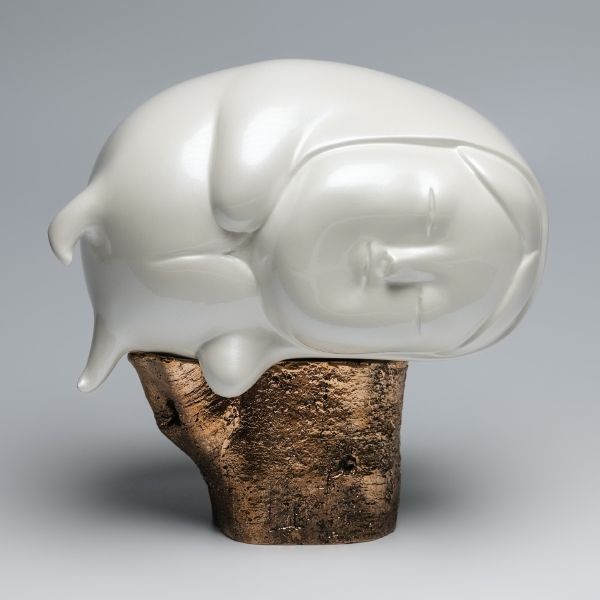Offered By
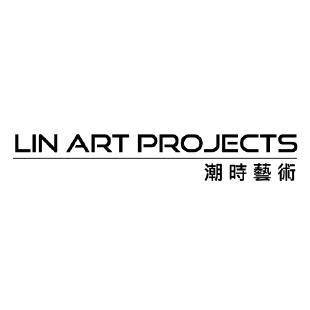
LIN ART PROJECTS 潮時藝術
台灣,台北市
-
迪士尼動畫累積出無數的經典形象,在其標榜的「The Happiest Place in the World」的世界中,反映出的除了表象的歡樂之外,其實更映襯出迪士尼世界與真實人生之間的差異。在無數的藝術家、設計師、各種廣告、領域中,被重新演繹的迪士尼經典語言,創造出其在「快樂」形象之下拉扯出的,與真實之間莫大斷層空隙的可能性。本件作品亦將其創造之元素拉出,討論人與人之間,被看待與看待的主觀、被動關係。在凝視作品時,從表面拋光成鏡面的作品中,在那對可愛的圓形耳朵造型物裡,觀者凝視到的,是他者,還是自己?
The Chinese and English title of the work is deliberately not translated literally. Instead, both terms are present, hinting at the themes hidden beneath the surface. With a headband that looks suspiciously like Mickey Mouse ears on its head, the stony-faced sculpture stands atop a disproportionate stage. What exactly is the drama unfolding there?
Among the countless classic images that Walt Disney Animation has created, their theme parks’ motto, “The Happiest Place in the World”, reflects not only the superficial appearance of happiness, but also asserts the disparity between Disneyworld and the reality we live in. The classic Disney imagination has been performed again and again by countless artists, designers, advertisements and mediums, resulting in the possibility of the “Happy” façade being taken further and further away from reality. This artwork also tries to extract the various elements of its composition, considering the subjective and passive relationship between the seeing and the seen, in the realm of human-to-human interaction. When you look at the artwork, at its surface, buffed as shiny as a mirror, between those adorable round ears, whom do you see? Others, or yourself?

